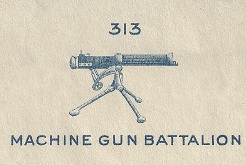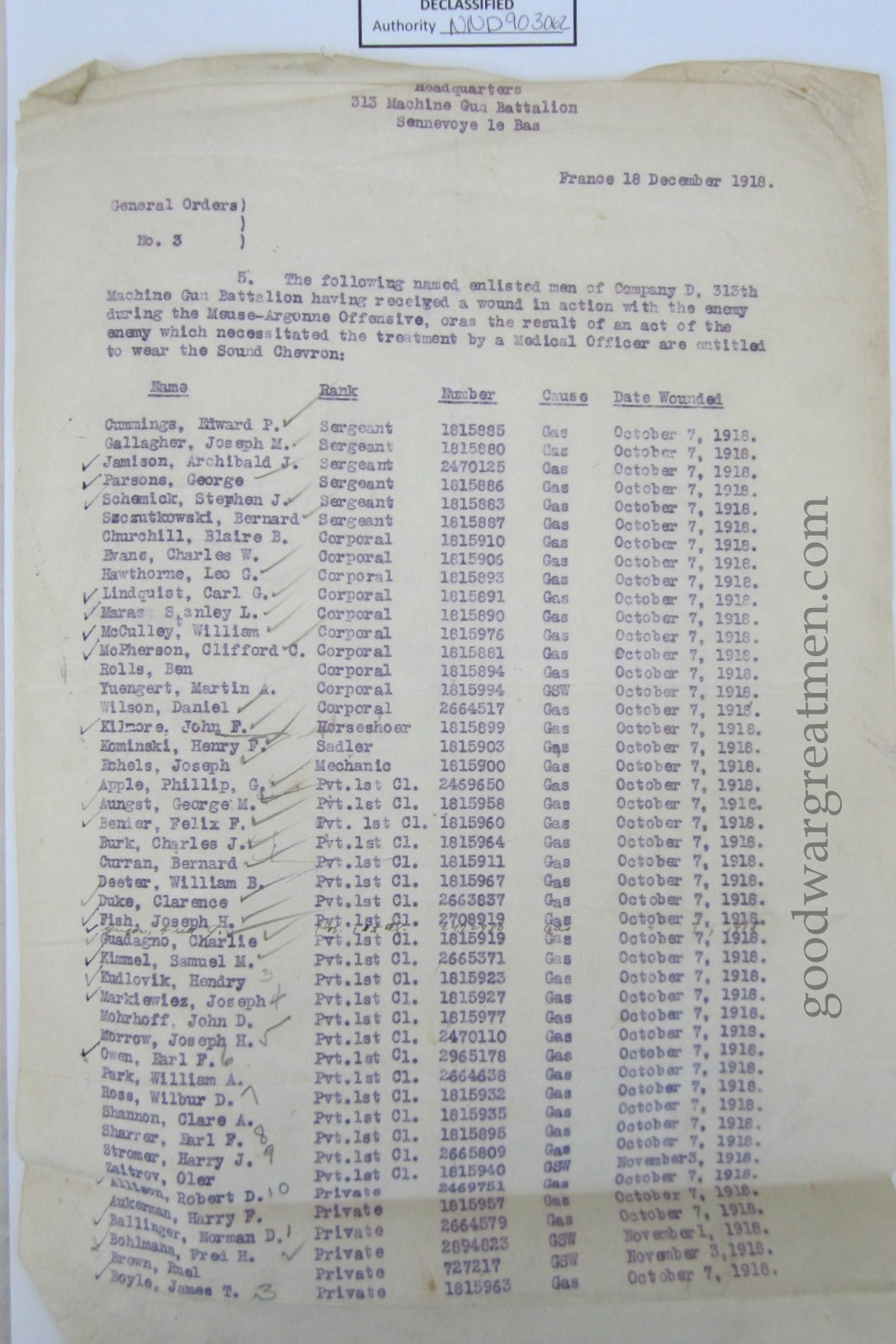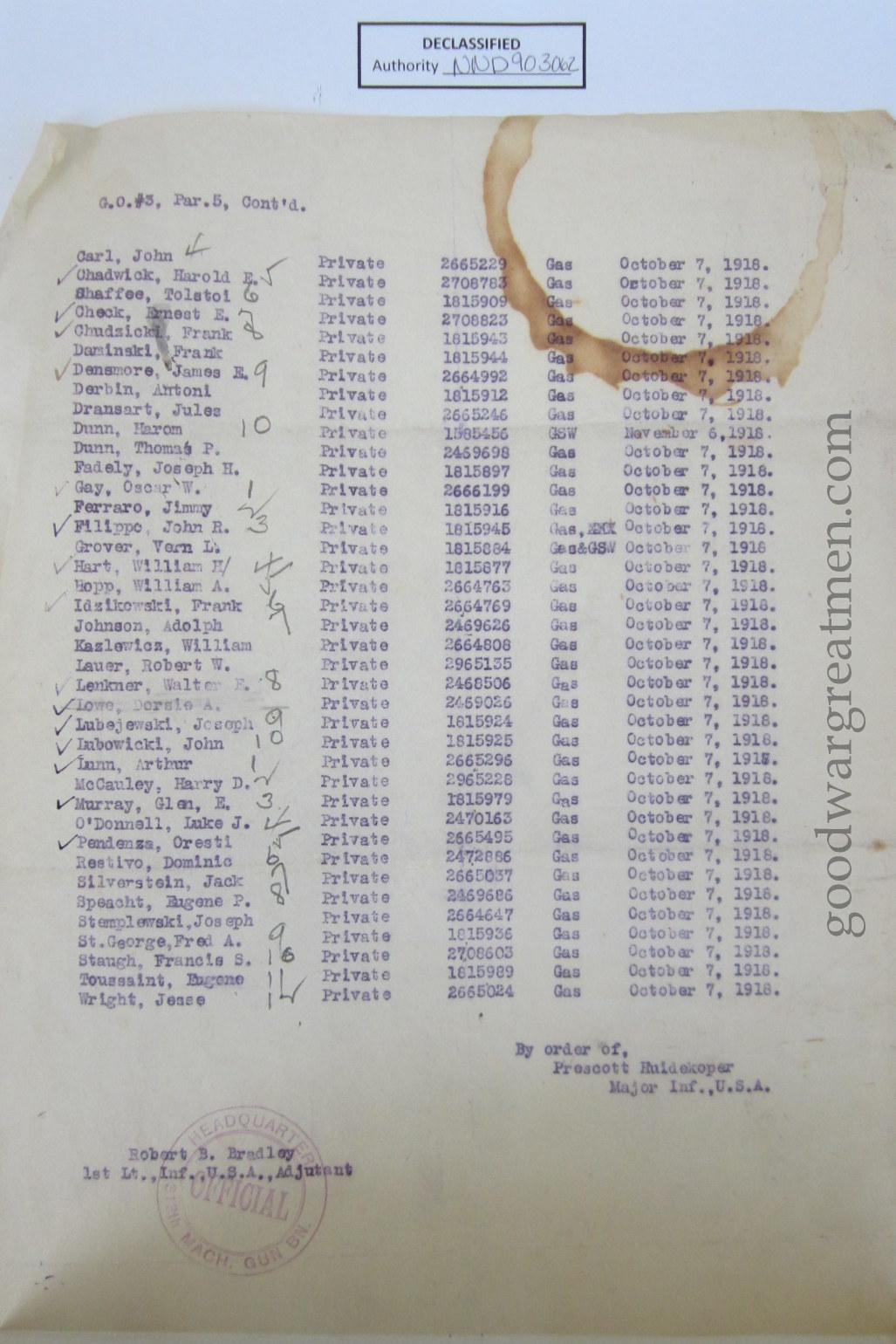Wound Chevron and Purple Heart
While the men of the Battalion were still in France, recognition of anyone wounded in combat was denoted by the use of a gold metallic-threaded chevron to be worn on the lower right cuff of the uniform.
The men wounded during World War I were not initially awarded a Purple Heart. Instead, this gold chevron was sown on the right sleeve of the uniform and was a shape similar in appearance to the overseas chevron worn on the left cuff. 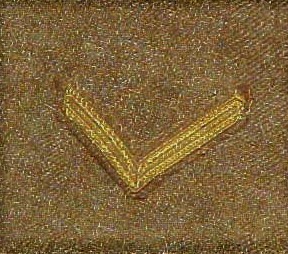
This photo of First Sergeant Alex MacWilliam was taken with him wearing both a wound chevron on his right cuff, and an overseas chevron on his left cuff. He is not yet wearing his Distinguished Service Cross in this photo.
In 1919, the United States approved a special certificate to be created for wounded soldiers. The following article describes the certificate, followed by a photograph of an actual certificate issured to Private Jules Dransart [1891-1957]. Dransart was wounded on October 7, 1918 while serving with part of Company D. Two pages appear at the bottom of this article showing additional men who were wounded by a gas attack while attached to Company D.
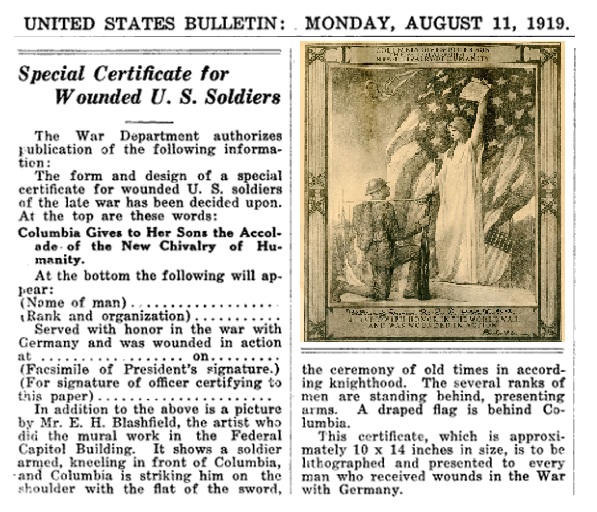
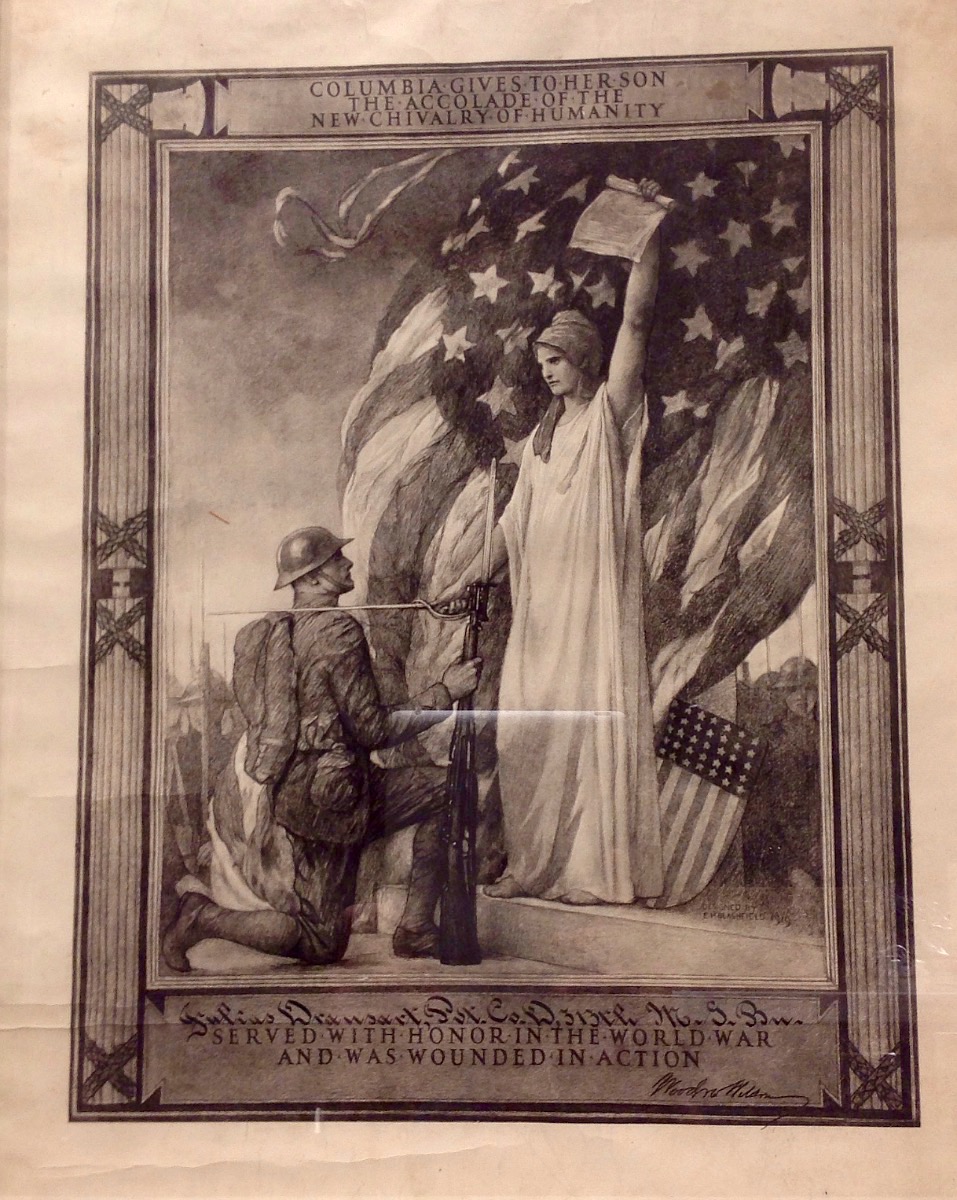
The Purple Heart was reintroduced by President Herbert Hoover in 1932 as a commemoration to the bicentennial of George Washington's birthday (1732-1932). The Purple Heart was approved by General Order No. 3 on the 200th Anniversary of Washington's birthday. "By order of the President of the United States, the Purple Heart established by General George Washington at Newburgh, August 7, 1782, during the War of the Revolution, is hereby revived out of respect to his memory and military achievements." Signed by the Secretary War, General Douglas MacArthur, Chief of Staff.
Private First Class Harry J. Stromer [1886-1937] applied for his Purple Heart, and after receiving it, the following article appeared in the Braddock Free Press on March 2, 1933. Stromer's name appears on the list of Company D men who were gassed during fighting that occurred in October 1918, during the Meuse-Argonne Battle.
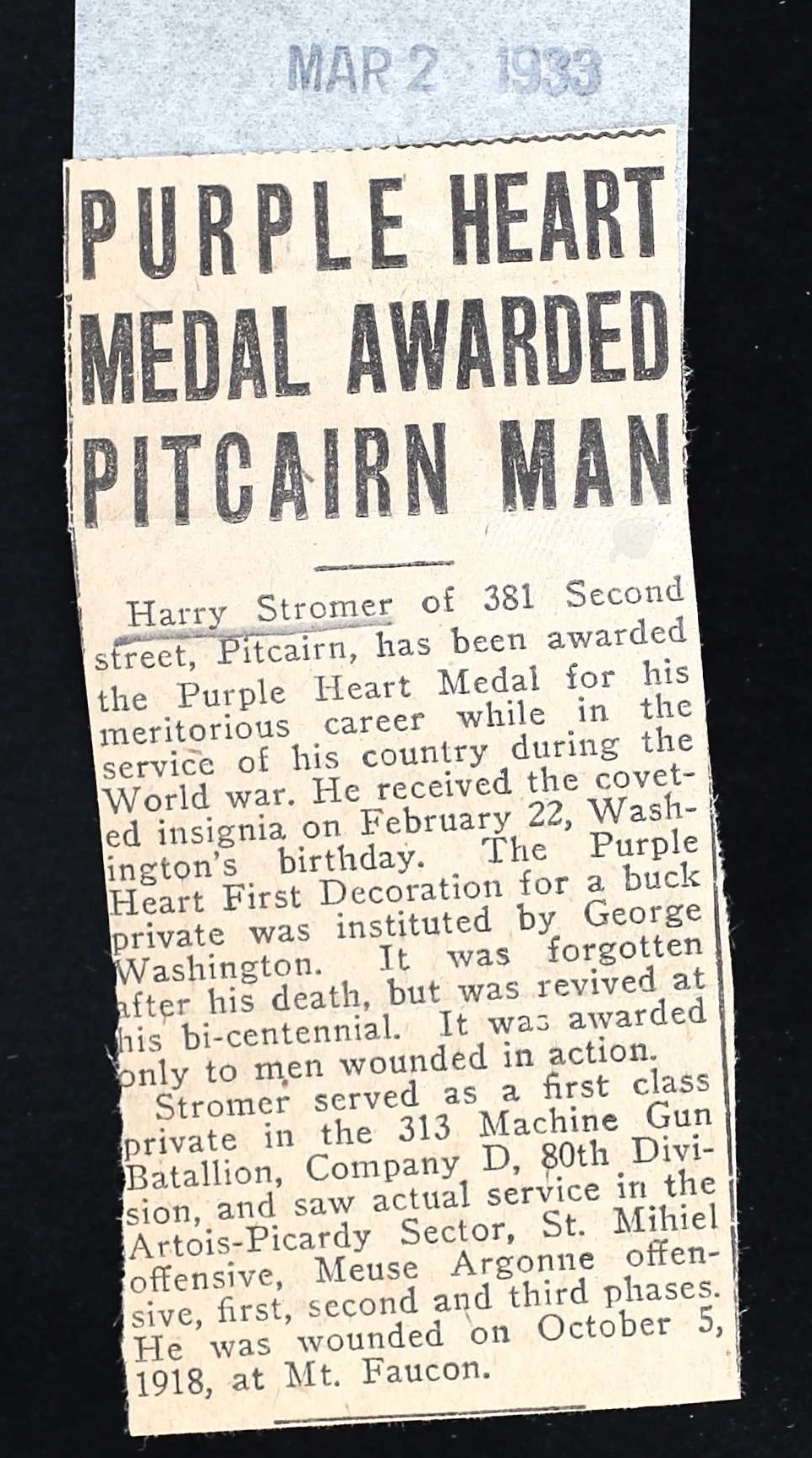
The following two documents show a list of the men in Company D who were authorized to wear the wound chevron. Copied by Andrew Capets at the National Archives in College Park, Maryland.
